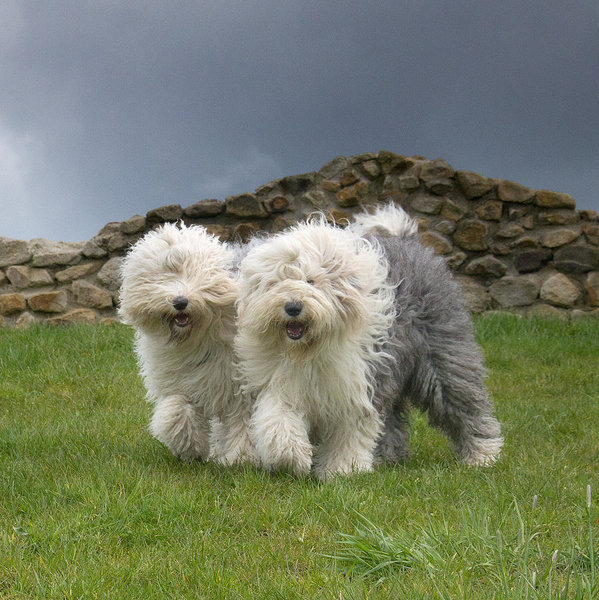
Once upon a time, the Old English Sheepdog “owned” the bucolic hills and pastures of Great Britain as the “right hand man” of the farmer and rancher. These “drovers” moved herds across huge expanses of land, their trademark “body slam” helping persuade sheep and cattle, typically larger than what we see today, to “move it!”
Around the same time that farming was starting to diminish, American “Captains of Industry” traveling to the UK to play and seal deals saw the dogs, and a new career was found for the breed: Show dog. Pittsburgh industrialist, William Wade, was the first to bring the Old English to the United States, and by the late 18th century, the Guggenheims, Vanderbilts,Morgans, Goulds, and Harrisons – five of the wealthiest families in the country all owned, bred and exhibited the dogs at New York’s 1905 Westminster Kennel Club Dog Show.
Half a century later, the breed had became one of the most beloved family dogs, and was a popular dog to include on TV and the Silver Screen, but another half century later, and the breed may now be in trouble, its numbers on the decline. Last year, only 424 registrations for the Old English Sheepdog in its country of origin landed the breed on the Kennel Club’s Vulnerable Breeds list.
While we don’t have current numbers for the state of the breed in the United States, our sense is that with decreased use of working dogs on farms, and a trend towards smaller dogs as pets, the OES may be suffering. In an interview with Modern Farmer back in 2013, Doug Johnson, then president of the Old English Sheepdog Club of America, expressed concern for his favorite dog: “It’s because of the dedication it takes to maintain these guys, [that it’s] a labor or love. When they were herding dogs, they were shaved down when the sheep were sheared, so their coats were manageable. With the busy lives we lead, most people don’t have the schedule nor the time to keep them up. But what they also don’t realize is as a companion or family pet, the OES won’t let you down…”
It’s a tragedy, in our view, to lose any breed, especially when there so much to like about them. We think a marvelous quote by Serena Van Rensselaer is a fitting way to conclude: “They can be dreadful teasers, with a merry glint in a half-buried, shining eye, huge bluffers, and very stubborn indeed if not treated with proper respect. Their hamming instinct has upstaged many a professional entertainer, upset many an obedience degree, and is a constant source of surprise and delight. They take a relaxed and comic view of life’s pressures and problems. They are most unsophisticated, uncomplicated, completely sincere creatures, unable to hold a grudge.” —Breed Manual of the Old English Sheepdog Club of America. #PreserveOurDogBreeds
Image: Synchronyzed” by Dewollewei is available as a poster and print here.
